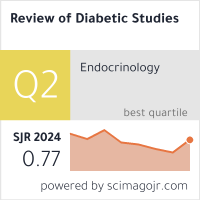From Surgery To Silence: Uncovering The Causes Of Treatment Dropouts In Advanced Diabetic Retinopathy Patients
DOI:
https://doi.org/10.1900/h3rcxx22Keywords:
trd – tractional retinal detachment, prp – panretinal photocoagulation, ppv-pars plana vitrectomy, dr- diabetic retinopathy, hrpdr – high risk proliferative diabetic retinopathy.Abstract
Background: This study aimed to investigate the proportion and underlying causes of surgical treatment dropouts among patients with high-risk proliferative diabetic retinopathy (HR-PDR) and advanced diabetic eye disease.
Methods: An observational study was conducted at a tertiary healthcare center in Karnataka, India, from August 2022 to August 2024. Adult patients with type 2 diabetes mellitus diagnosed with severe non- proliferative or proliferative diabetic retinopathy and advised to undergo pars plana vitrectomy (PPV) were included. Clinical records were reviewed, and patients who failed to return for surgical treatment were contacted telephonically. A structured 19-item questionnaire was administered to assess reasons for non- adherence. Data were analyzed using SPSS version 22, with categorical variables expressed as n (%).
Results: Of 150 patients advised for PPV, 60 (40.0%) did not proceed with surgery. The largest subgroup of dropouts was aged 61-70 years (21/59; 35.6%), and 44/59 (74.6%) were male. Nearly half (28/59; 47.5%) had diabetes for more than 10 years, and 44/59 (74.6%) were insulin-dependent. While 36/59 (61.0%) were aware of disease progression, 23/59 (39.0%) lacked awareness of the consequences of delayed treatment.
Notably, 51/59 (86.4%) had never received any prior interventional therapy for diabetic retinopathy. The most frequently reported barriers to surgery were metabolic unfitness (35/59; 59.3%), financial constraints (32/59; 54.2%), transportation difficulties (30/59; 50.8%), and fear of post-surgical complications (29/59; 49.2%).
Conclusion: A considerable proportion of patients with advanced diabetic retinopathy fail to undergo timely vitrectomy, primarily due to modifiable barriers such as systemic instability, financial hardship, and poor awareness. Addressing these issues through structured patient counseling, pre-surgical optimization clinics, improved referral systems, and financial support mechanisms may help reduce surgical dropout.
Community-level education and integration of diabetic and ophthalmic care are essential for early engagement. Future multicenter studies will be important to validate these findings and inform scalable public health interventions that improve long-term visual outcomes in high-risk populations.
Downloads
Published
Issue
Section
License

This work is licensed under a Creative Commons Attribution-ShareAlike 4.0 International License.


